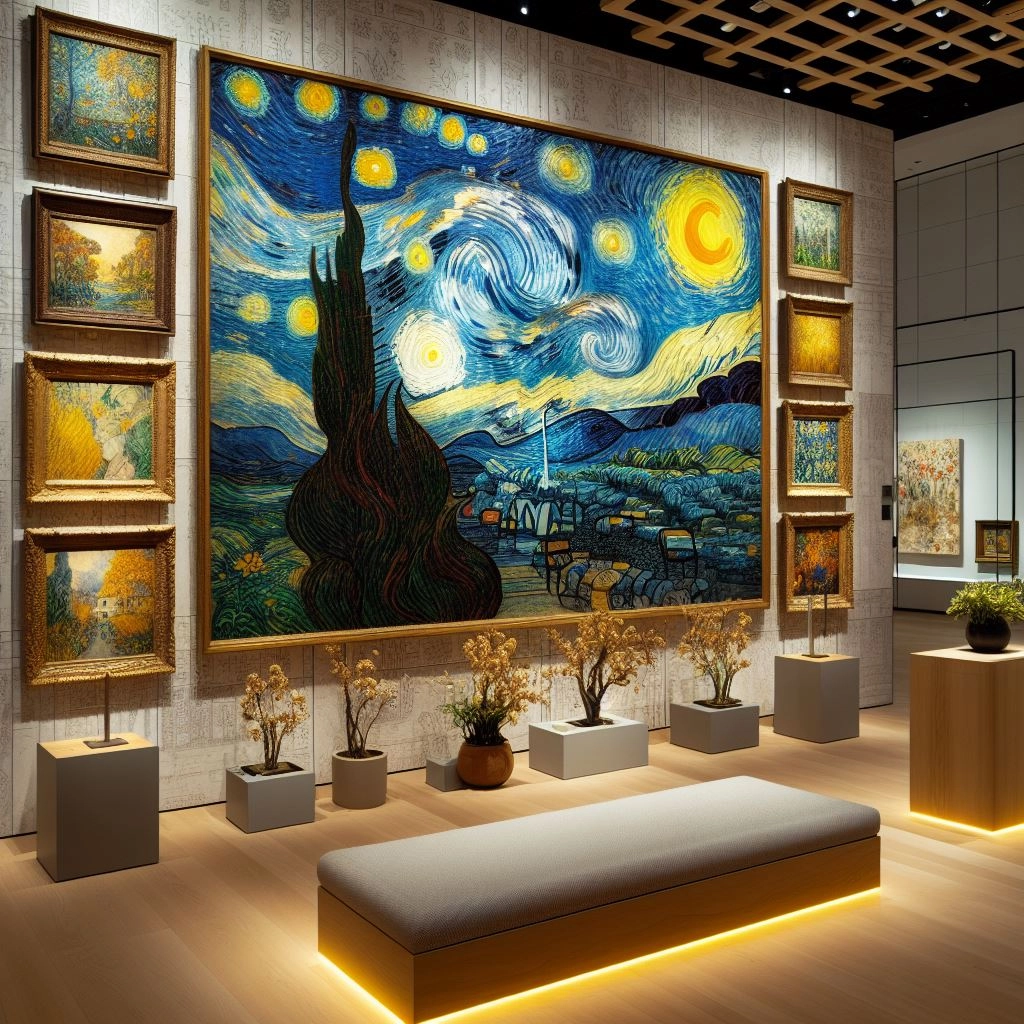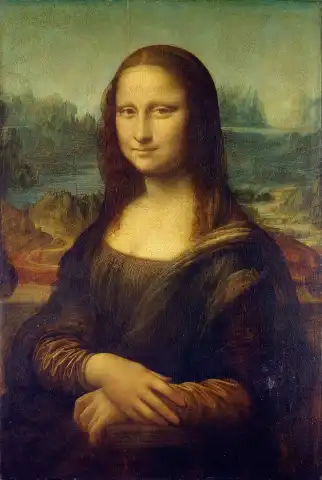The Enduring Power of Van Gogh


Vincent van Gogh. The name itself conjures images of swirling stars, vibrant sunflowers, and a life lived with passionate intensity. His art, though initially met with indifference, has become some of the most recognizable and beloved in the world. His bold style, characterized by vivid hues and unique perspectives, bridged the gap between 19th-century impressionism and 20th-century expressionism, influencing generations of artists. But what is it about Van Gogh's work that continues to captivate us, decades after his death? This blog explores the enduring power of this iconic artist, delving into his life, style, the impact of Dutch Masters Art, and the lasting influence of his art.
Famous Artists Art: Van Gogh's Enduring Legacy
Van Gogh stands among the titans of art history, a pivotal figure whose influence resonates even today. He's not just one of the famous artists; he's the quintessential tortured genius, whose struggles and triumphs are inextricably linked to his art. His impact extends beyond the canvas, shaping our understanding of creativity, mental health, and the very nature of artistic expression. His use of color, texture, and expressive brushwork paved the way for movements such as Fauvism and Expressionism or post-impressionism, inspiring countless artists to embrace bold colors and subjective perspectives. His influence can even be seen in contemporary artists who explore themes of isolation and emotional expression. He demonstrated that art can be a powerful vehicle for personal expression, regardless of societal acceptance.
Vincent van Gogh's Famous Paintings: Beyond the Brushstrokes
While a wide range of famous artists abstract works push the boundaries of representation, Van Gogh's art, even at its most expressive, remains rooted in the tangible world. His famous paintings, like Vincent van Gogh's "Starry Night", are more than just beautiful images; they are windows into his soul. They capture not just the outward appearance of a subject but also the emotions and energy that Van Gogh perceived within it. This ability to infuse his art with such raw emotion is a key reason for its enduring appeal. "Starry Night," for example, isn't simply a depiction of a night sky; it's a visceral representation of Van Gogh's internal landscape, his feelings of awe and wonder, perhaps tinged with a sense of unease. This emotional resonance is what allows viewers to connect with his work on such a profound level.
Vincent van Gogh: A Life Story Woven in Color and Turmoil
Vincent van Gogh, a Dutch post-impressionist painter, left an indelible mark on Western art. Understanding Vincent van Gogh's early life is crucial to understanding his art. Born in the Netherlands, his path to becoming an artist was anything but straightforward. He worked as an art dealer, a teacher, and even a preacher before dedicating himself to painting at the relatively late age of 27. This diverse background, coupled with his struggles with mental illness, deeply influenced his artistic vision, imbuing his work with a unique sensitivity and empathy. His Vincent van Gogh portrait work, especially his self-portraits, offers a poignant glimpse into his inner turmoil. These self-portraits are not just studies of his physical appearance; they are introspective explorations of his identity, his anxieties, and his evolving sense of self. His struggles with mental health, though often romanticized, were a significant part of his life and undoubtedly shaped his artistic output.
Vincent van Gogh's Art Style: A Revolutionary Approach to Paint
Vincent van Gogh's art style is instantly recognizable. His themes often revolved around nature, everyday life, and personal struggle. His bold use of color, thick impasto brushstrokes, and expressive lines create a dynamic and almost tactile quality. He manipulated paint with an almost frenetic energy, building up layers of pigment to create texture and depth. This distinctive style, born from his desire to express his emotions directly onto the canvas, was revolutionary for its time and continues to inspire artists today. His paintings, like Vincent van Gogh's "The Sower", demonstrate his mastery of color and light, but also his innovative approach to applying paint. The thick, visible brushstrokes are not just a technical element; they are an integral part of the emotional expression, conveying a sense of movement, energy, and even urgency. This expressive use of paint was a radical departure from the more polished and refined styles that preceded him.
Dutch Masters Art: A Foundation for Innovation
While Van Gogh's style was undeniably unique, it's important to acknowledge the influence of earlier artists, particularly the Dutch Masters. While he moved far beyond their meticulous realism, the Dutch Masters' emphasis on light, detail, and everyday life provided a foundation upon which Van Gogh built his own artistic language. He studied their techniques, absorbing their understanding of color and composition, even as he transformed these traditional elements into something entirely new. He admired their ability to capture the essence of their subjects, a quality that Van Gogh himself sought to achieve in his own work, albeit through a much more expressive and emotionally charged lens. This connection to the Dutch Masters underscores the idea that even the most revolutionary artists are part of a larger artistic continuum.
Van Gogh Paintings: From "The Sower" to "Starry Night" and Beyond
His audacious use of color, bold brushwork, and emotional intensity laid the groundwork for future artistic movements, including Expressionism and Fauvism, influencing generations of artists who followed in his footsteps. Van Gogh's body of work is vast and varied, encompassing landscapes, portraits, still lifes, and interior scenes. From the earthy tones of "The Sower", depicting the hard labor of rural life, to the vibrant colors of blues and yellows of "Sunflowers," celebrating the beauty of nature, his paintings offer a glimpse into his diverse interests and artistic explorations. "Starry Night", perhaps his most famous painting, transcends its depiction of a starry sky to become a powerful expression of human emotion and a reflection on the vastness of the universe. The vivid colors and tumultuous swirls in the painting are thought to reflect the emotional turbulence that plagued Vincent during his stay at the asylum. “Starry Night” is celebrated for its dreamlike quality and evocative power. The night sky, a swirling vortex of deep blues and vibrant yellows, serves as the backdrop to the dark silhouette of the village below. "The Starry Night" is often associated with van Gogh's mental health issues. The exact cause of his mental health issues is still debated, but factors like family history, poverty, and personal challenges likely played a role. His paintings, though not always commercially successful during his lifetime, have since become icons of Western art, fetching astronomical prices at auction and drawing crowds to museums worldwide. Each piece reflects his intense emotional state and his ability to transform everyday scenes into profound, expressive art. The enduring popularity of Van Gogh's art posters is a testament to the universal appeal of his work.
Vincent van Gogh Facts: Separating Myth from Reality
Van Gogh's legacy is a testament to the transformative power of art, even in the face of adversity. His paintings, once dismissed by critics and collectors, now command millions of dollars and inspire countless artists around the world. Many Vincent van Gogh facts contribute to the romanticized image of the tortured artist. His struggles with mental illness, culminating in his tragic suicide at the age of 37, have become part of his legend. While it's important not to reduce his complex personality to a simple narrative of suffering, it's undeniable that his personal struggles deeply informed his art. Understanding these Vincent van Gogh facts adds another layer of meaning to his work, allowing us to connect with the artist on a more personal level. However, it's crucial to remember that his legacy is not defined solely by his suffering. It's defined by the vibrant colors, passionate, and enduring beauty of his art, his innovative use of color and brushwork, and his unwavering commitment to expressing his unique vision of the world. He remains an inspiration to fellow artists and art lovers alike, a testament to the enduring power of art to connect us to the deepest aspects of human experience. The Timeless Legacy of Vincent van Gogh Vincent van Gogh's life and work are a testament to the power of creativity and perseverance.
Subscribe to our newsletter to get updated and enjoy a 10% voucher
Apr 18 2024 / Biography Art History



